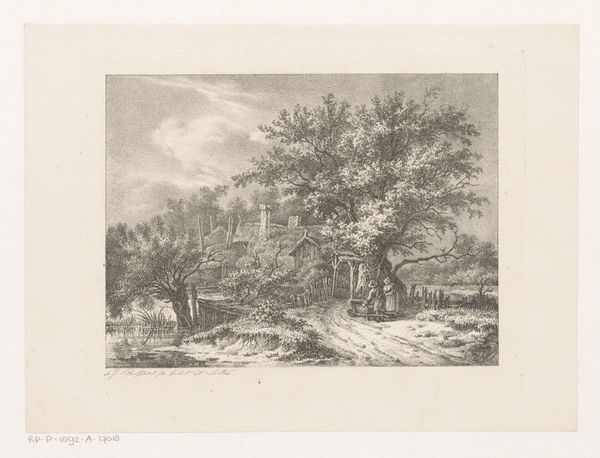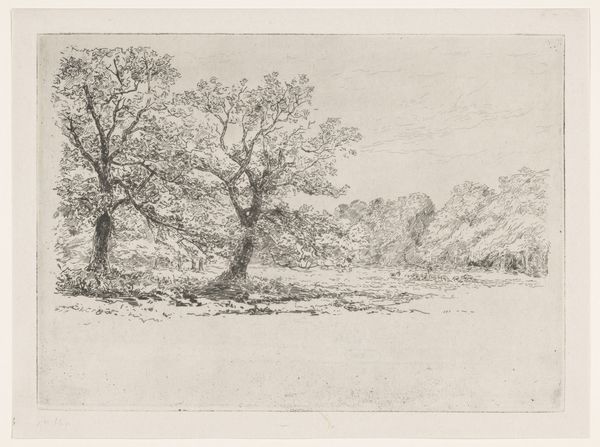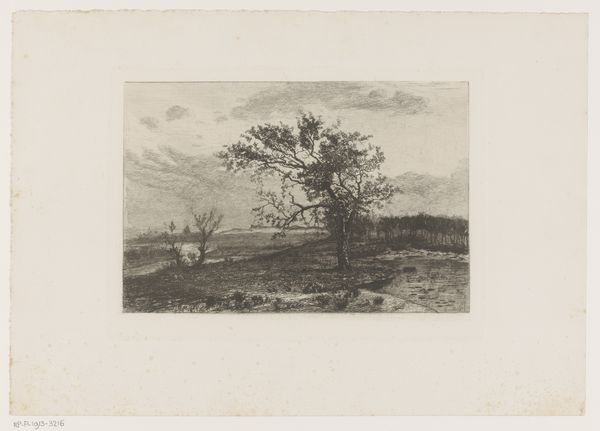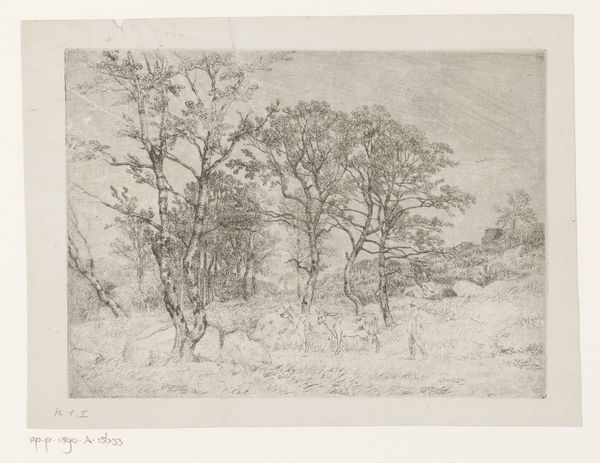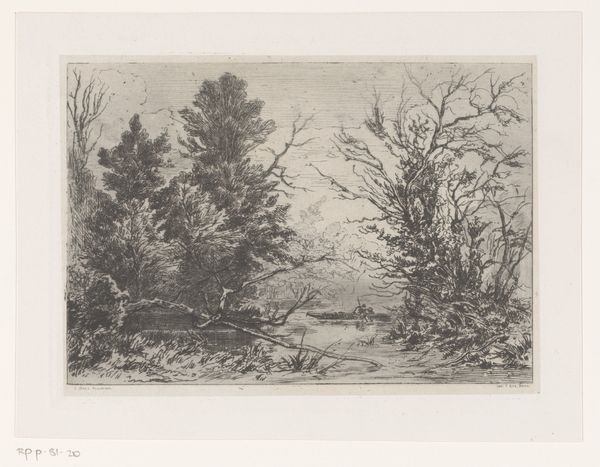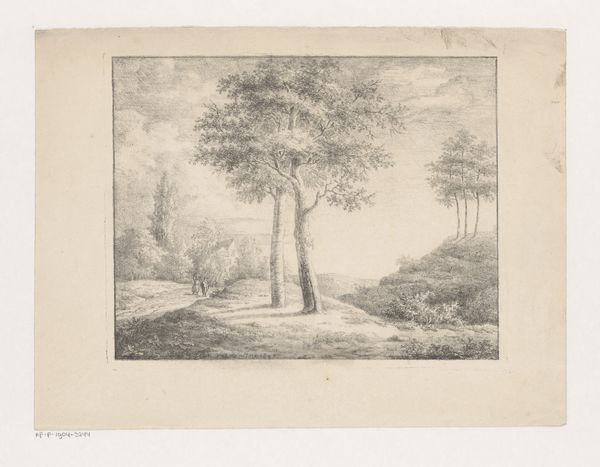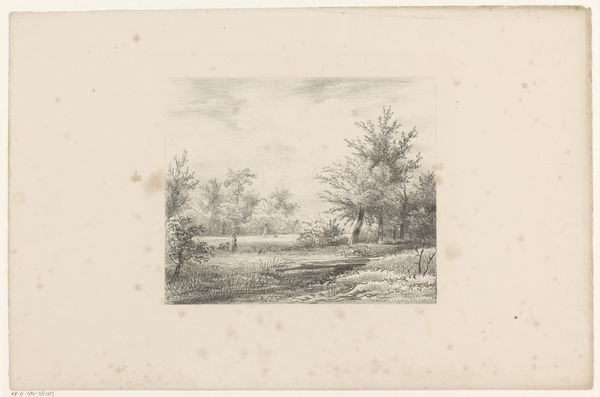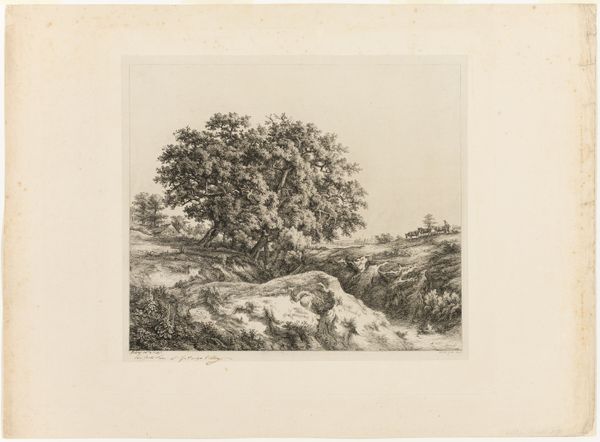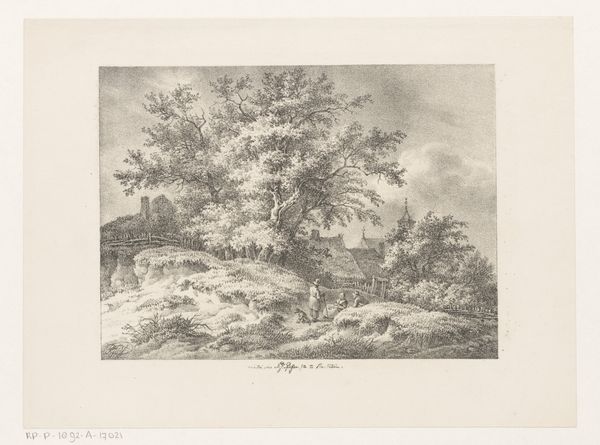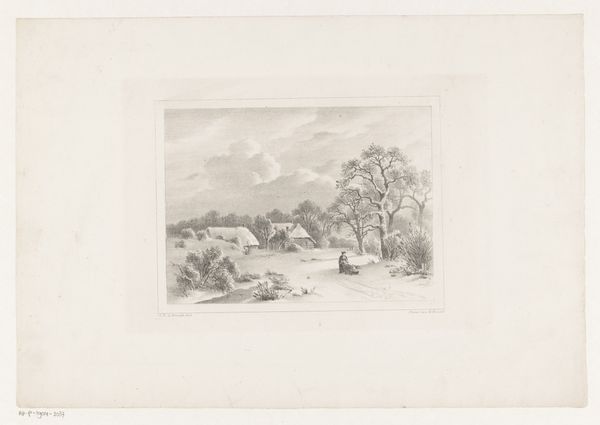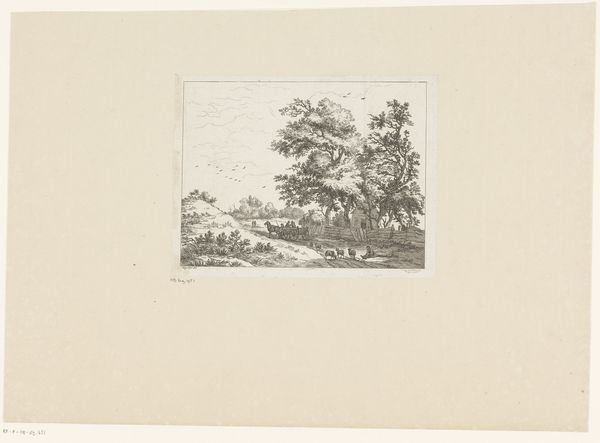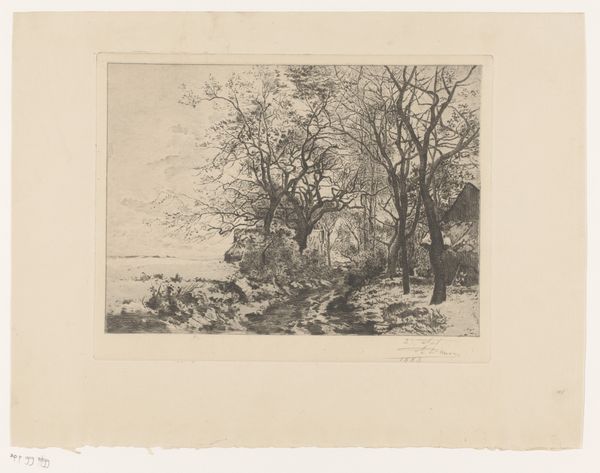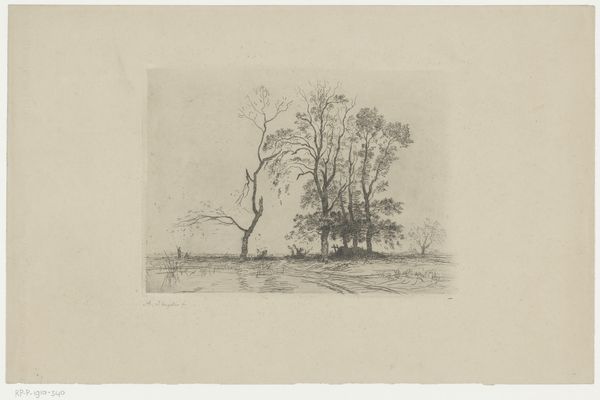
drawing, graphite
#
drawing
#
landscape
#
romanticism
#
graphite
#
watercolor
#
realism
Dimensions: height 238 mm, width 316 mm
Copyright: Rijks Museum: Open Domain
Curator: Before us, we have Willem Roelofs' "Landschap," created in 1847. It resides here at the Rijksmuseum and employs graphite in a style that touches upon both Romanticism and Realism. Editor: My initial impression is of quietude, but also something stark, almost barren. The leafless tree dominates the composition. There's a lonely quality. Curator: It’s true; Roelofs' landscape exists within a lineage of artistic representation shaped by social and political upheaval of the time. Consider the period and the growing awareness of land usage and ownership—the individual versus nature. Editor: So, the material production speaks to the social context. Graphite, then a relatively accessible material, allowed for wider artistic expression, diverging from traditional oil paints often associated with the elite. And here it depicts what feels like a raw, almost brutal portrayal of the land. No romanticizing the scene, materially speaking. Curator: Precisely! Roelofs isn't solely depicting a pretty view; he engages with the materiality of the land itself, suggesting perhaps a sense of detachment or even exploitation of natural resources that mirrors a society grappling with its own identity. Note how that solitary figure almost disappears into the landscape; where is their place within it? Editor: That’s interesting, you mentioning place. The execution with graphite allows for remarkable detail, drawing attention to the textures of the earth and the skeletal tree, turning something seemingly "ordinary" into a site ripe with the evidence of social and ecological relationships. Curator: Yes! And that tension is precisely what makes Roelofs' work so engaging. The human figure’s scale suggests a loss of self in something far beyond grasp. A critique of societal structures emerges, if one is seeking it. Editor: It almost forces the viewer to confront the conditions of both art production and agricultural, possibly exploited, labor. Curator: The beauty here is that Roelofs gives space for many different interpretations. I look at this landscape and feel empowered to interrogate the intersections of personal identity and the grander socio-political narrative. Editor: And I'm drawn to consider the actual labor –the movement of the graphite across paper, the hand of the artist engaging with and re-presenting the materiality of the earth itself. It makes us think about consumption, and the resources required to make this very piece in the first place.
Comments
No comments
Be the first to comment and join the conversation on the ultimate creative platform.
